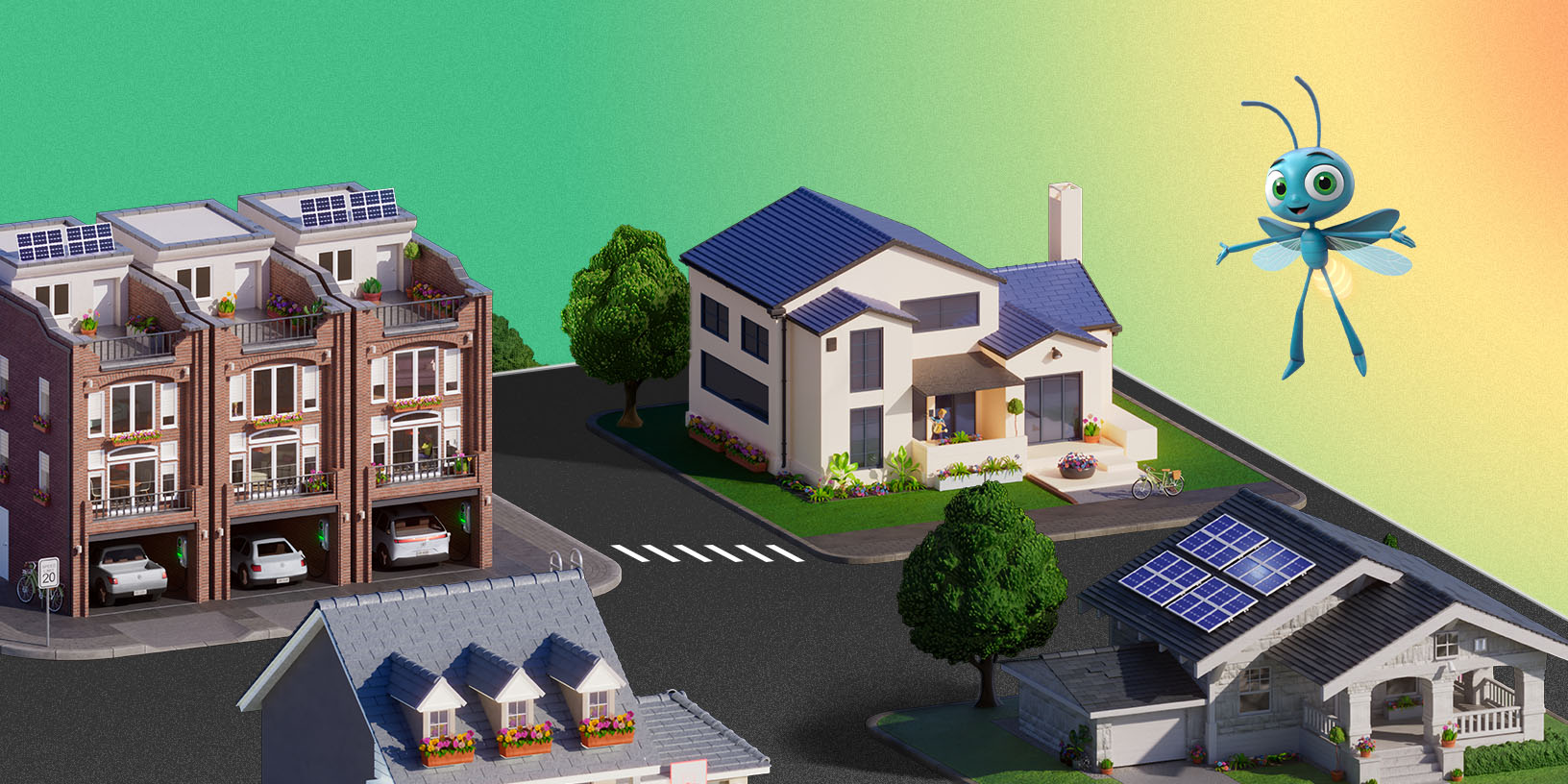Green Mountain Energy's Guide to Going Solar
Harnessing the Sun: The Impact of Solar Energy

For the first time, renewables are projected to take the place of coal as the world’s largest source of electricity – and all by 2025. There is no better time to get on board with solar energy adoption in particular; solar energy is the fastest-growing renewable energy source on the planet, and it’s improving all the time. Read on to find out more about the environmental and economic impacts of solar energy and how residential solar growth can benefit you at home.
Solar Energy Hits Record Capacity
Solar energy capacity, i.e., the maximum energy a system can produce, is now at a record high, and it doesn’t look to be slowing down anytime soon. According to the U.S. Energy Information Administration (EIA), between 2022 and the end of 2023, solar energy capacity in the United States increased by a whopping 55%. The EIA predicts a further 75% rise from 2023 to 2025, providing an abundance of clean energy. In 2024, 23% of the country’s electricity is projected to come from renewable sources and $380 billion is set to be invested in solar energy globally, surpassing the funds set aside for oil drilling.

Solar Energy Adoption Benefits the Environment
Ecosystems are set to benefit hugely from the rise in solar power. Solar energy adoption mitigates the damage to animals and habitats caused by sourcing fossil fuels, which can often be disruptive to the environment. Energy produced by solar panels creates no harmful emissions and reduces our dependence on finite resources, improving the overall health of the planet. And it’s not just plants and animals who benefit from this; cutting air pollution reduces the risk of respiratory and cardiovascular disease in humans, as well as contributing to longevity and improving mental health. According to experts, solar panels make up for their environmental construction costs in just one to four years and last for roughly 30.
Increased Adoption of Solar Energy Bolsters Local Economies
We’re already seeing the economic impact of solar energy adoption, with job creation and increased property values across the United States. In 2022, the International Renewable Energy Agency (IRENA) reported that over 4.9 million jobs had been created as a direct result of the solar energy industry. In addition, solar energy also creates indirect job opportunities for the production and transport of materials, which offers increased business to local services, supports the workforce, and bolsters communities.
In Texas alone, solar energy adoption has increased by over 600% between 2017 and 2022, which is helped by the state’s abundant sunlight and an appealing selection of incentives and benefits. In 2024, Harris County in Houston was awarded $250 million for solar panel and battery installations as part of a $7 billion federal grant to benefit low-income communities. The grant covers training for residents interested in the solar industry, creating a new job market that may help lower utility costs for homes and businesses. Grants like this are becoming widespread across the U.S. and aim to close the affordability gap for clean energy. According to the Office of Energy Efficiency and Renewable Energy, across the states, if you own a house with a solar panel system installed between January 1, 2017, and December 31, 2034, you can claim federal solar tax credits worth 30% of the installation cost.
Smart Technology Makes Solar Energy More Reliable
To keep up with demand, smart grids have been digitized and automated to ensure a stable supply of energy for consumers and help integrate renewables into the power system. Intermittency has long been a concern when it comes to renewable energy, which has led to the development of demand response programs. These allow consumers to adjust their energy consumption to reduce demand on the grid during periods of high electricity use or extreme temperatures. During these times, smart thermostats will automatically adjust by a few degrees to conserve energy, benefiting the environment and local communities as well as lowering electricity bills.
Doing Your Part: Installing Solar Panels
With the above in mind, your next question may be: What do solar panels cost, and are they worth it? In this case, you’ll be pleased to know that the cost of installing solar panels has dropped by over 40% over the last 10 years. In 2010, residential systems averaged $40,000 per installation, a figure that decreased to $25,000 by 2022 and continues to do so. These averages will vary depending on your system size, the installation company, region and financing rates. Once you’ve installed panels, you can enroll in a buyback program through your local utility company or retail electricity provider (like Green Mountain Energy). This will let you sell any energy you don’t use back to the grid.
More Ways to Get Solar Electricity
If you’re concerned about initial installation costs or if you live in an apartment, a community solar project or a clean electricity plan backed by wind may appeal to you. Choosing a solar or clean energy plan will let you power your home with 100% clean energy from the grid without installing panels. Green Mountain Energy is a leader in this space, having been in the business of clean energy since 1997. Today, check out all of our clean electricity plans.
Be Part of the Change
Solar power is here to stay, which is good news for the planet and you. With ever-improving technology and enticing incentives, it’s more accessible than ever before. Get more information on how to get started on your clean energy journey with Green Mountain Energy.
Take a big step for the planet with a renewable energy plan.
Enter your ZIP code to get started.
March 09, 2025
Discover the difference between solar panel installations and solar energy plans. Learn the pros and cons of each and find out which option best fits your lifestyle.
March 08, 2025
Not ready to install solar panels? No problem. Learn about renewable energy plans that allow you to power your home with 100% clean energy without the need for rooftop panels. Compare plans and find the one that best suits your needs.
March 07, 2025
Understanding your energy usage is essential for determining if solar power is right for you. This article helps you evaluate your consumption patterns and estimate how solar energy can reduce your costs and lower your carbon footprint.


